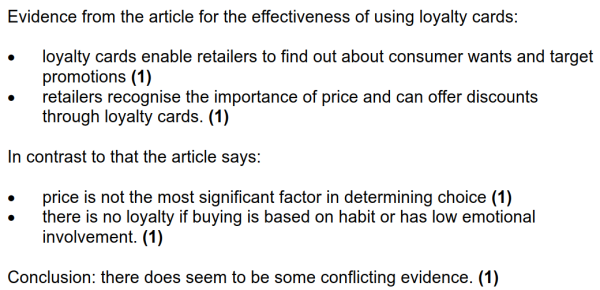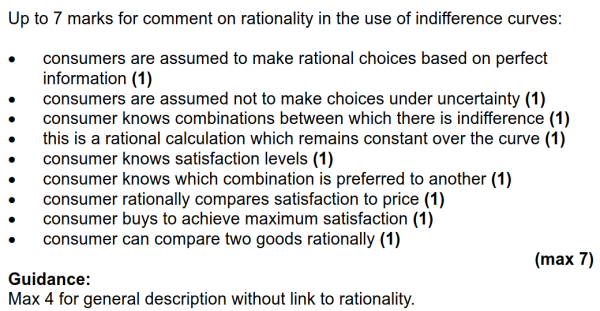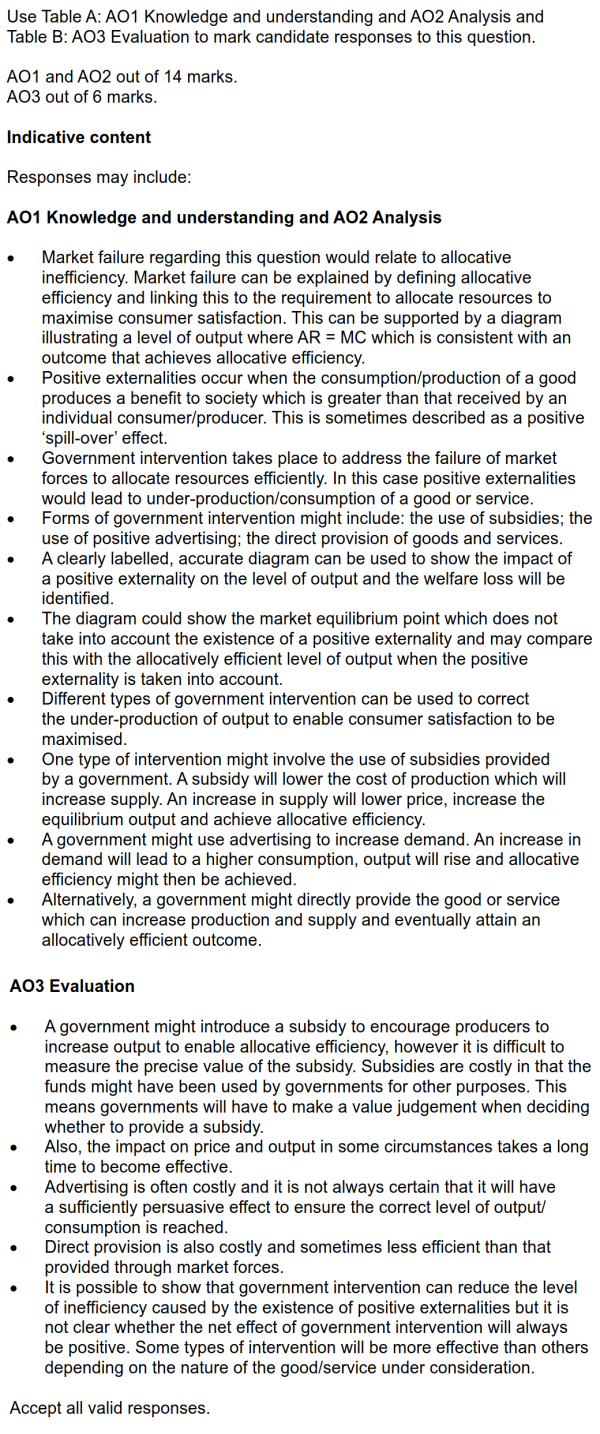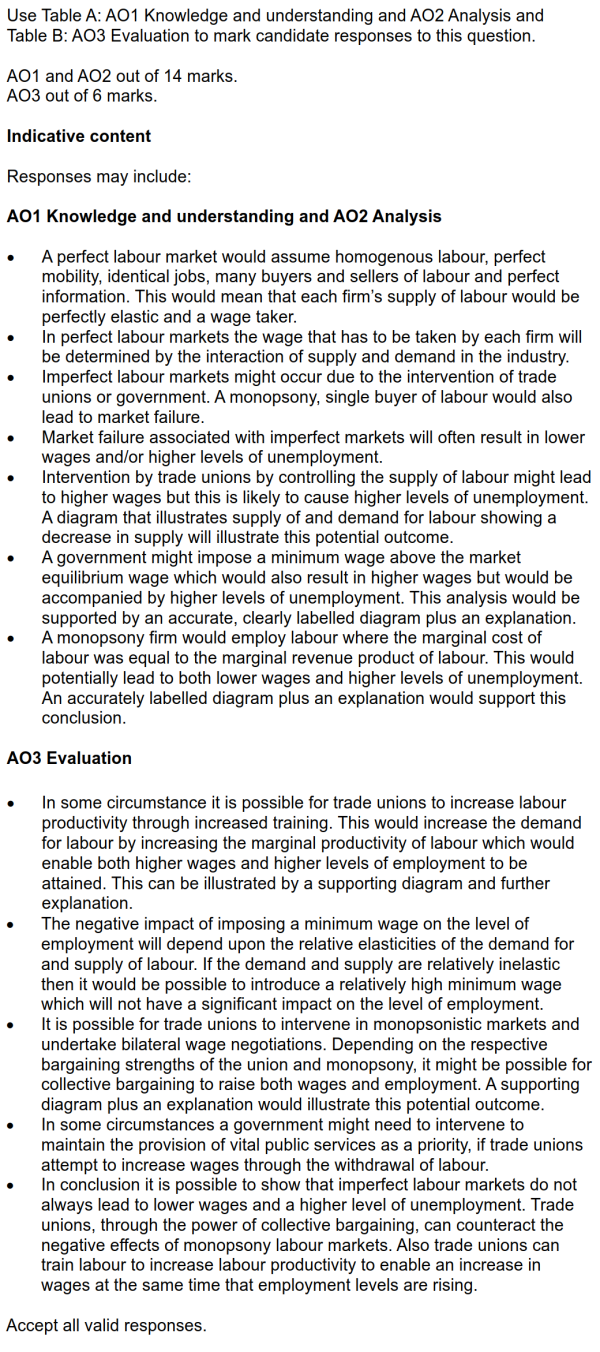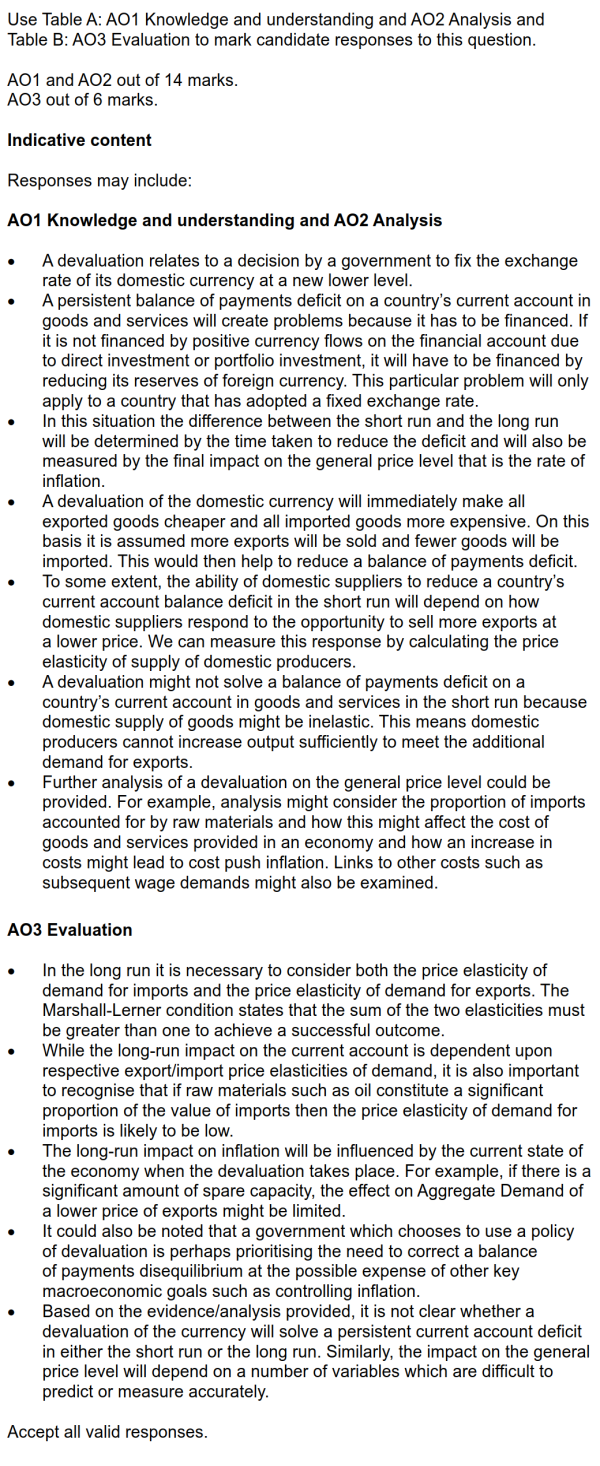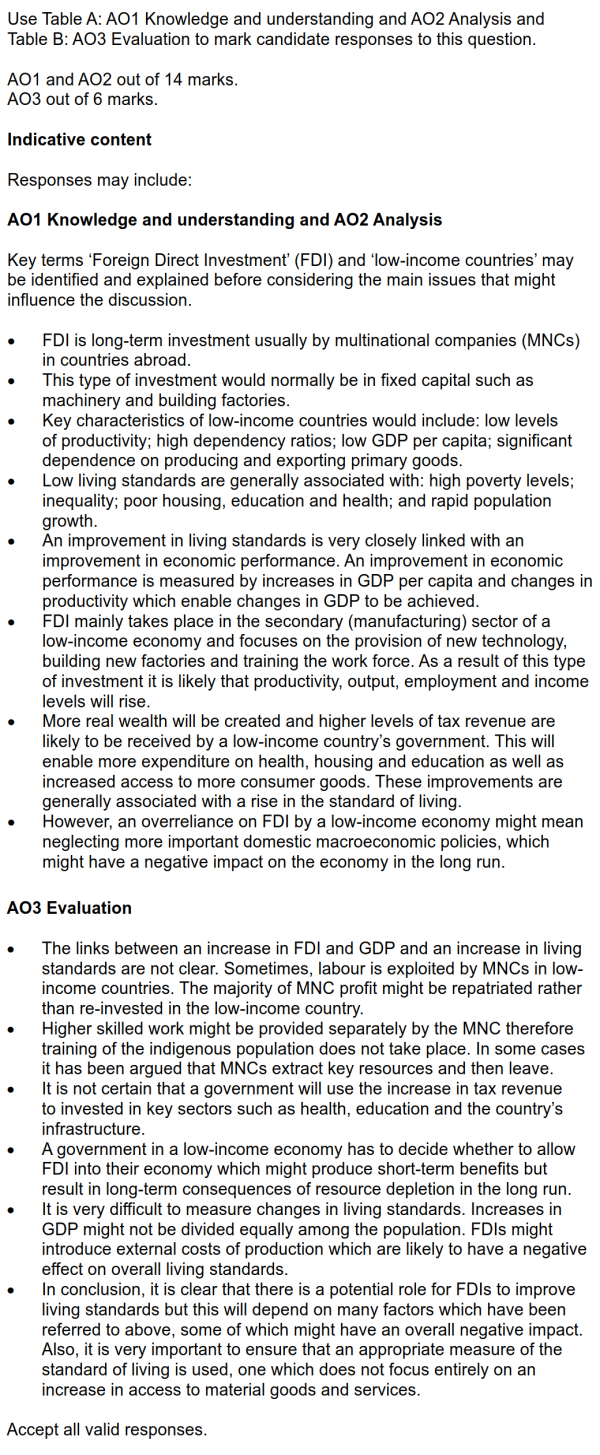“9708-2023-specimen-paper-4”的版本间的差异
| (未显示同一用户的3个中间版本) | |||
| 第1行: | 第1行: | ||
<center><big>[[CAIE AS and A Level past papers|'''【点此返回历年真题目录】''']]</big></center> | |||
<br/> | |||
<big>'''单题搜索方法''':右上角搜索中输入'''该题题干中的部分文字''',点击搜索后进入相关页面,然后使用ctrl+F5(或其他按键组合调出搜索框),再次搜索该题干文字,直接定位到题目。</big> | |||
<br/> | |||
==整卷下载== | ==整卷下载== | ||
*{{color|red|'''试卷'''}}请点击此处 ⇒ [https://www.cambridgeinternational.org/Images/596272-2023-specimen-paper-4.pdf 【2023 Specimen Paper 4】] | *{{color|red|'''试卷'''}}请点击此处 ⇒ [https://www.cambridgeinternational.org/Images/596272-2023-specimen-paper-4.pdf 【2023 Specimen Paper 4】] | ||
| 第15行: | 第20行: | ||
<center> | <center> | ||
''' | <big>{{Background color|#ffff00|''' 中英对照 '''}}</big> | ||
{| class="mw-collapsible mw-collapsed wikitable" | {| class="mw-collapsible mw-collapsed wikitable" | ||
|- | |- | ||
| 第79行: | 第84行: | ||
| align="right" valign="top" |'''文字版备查'''|| ||<small>(a) What evidence is there in the article to suggest that loyalty cards make markets imperfectly competitive? [4]</small> | | align="right" valign="top" |'''文字版备查'''|| ||<small>(a) What evidence is there in the article to suggest that loyalty cards make markets imperfectly competitive? [4]</small> | ||
|} | |} | ||
<br/> | |||
<br/> | |||
<br/> | |||
<br/> | <br/> | ||
{| | {| | ||
| 第96行: | 第104行: | ||
| align="right" valign="top" |'''文字版备查'''|| ||<small>(b) Explain why a profit-maximising retailer may be interested in the link between consumers’ loyalty and price elasticity of demand. [4]</small> | | align="right" valign="top" |'''文字版备查'''|| ||<small>(b) Explain why a profit-maximising retailer may be interested in the link between consumers’ loyalty and price elasticity of demand. [4]</small> | ||
|} | |} | ||
<br/> | |||
<br/> | |||
<br/> | |||
<br/> | <br/> | ||
{| | {| | ||
| 第113行: | 第124行: | ||
| align="right" valign="top" |'''文字版备查'''|| ||<small>(c) Consider whether there is conflicting evidence in the article about the effectiveness of loyalty cards which offer price discounts. [5]</small> | | align="right" valign="top" |'''文字版备查'''|| ||<small>(c) Consider whether there is conflicting evidence in the article about the effectiveness of loyalty cards which offer price discounts. [5]</small> | ||
|} | |} | ||
<br/> | |||
<br/> | |||
<br/> | |||
<br/> | <br/> | ||
{| | {| | ||
| 第149行: | 第163行: | ||
| align="right" valign="top" |'''文字版备查'''|| ||<small>2 With the help of a diagram, assess the view that government intervention can be used successfully to correct market failure caused by positive externalities. [20]</small> | | align="right" valign="top" |'''文字版备查'''|| ||<small>2 With the help of a diagram, assess the view that government intervention can be used successfully to correct market failure caused by positive externalities. [20]</small> | ||
|} | |} | ||
<br/> | |||
<br/> | |||
<br/> | |||
<br/> | <br/> | ||
{| | {| | ||
| 第185行: | 第202行: | ||
| align="right" valign="top" |'''文字版备查'''|| ||<small>4 ‘Devaluation of a country’s currency will reduce a persistent balance of payments deficit on its current account in goods and services in the short run but this will inevitably lead to high levels of inflation in the long run.’ Evaluate this statement. [20]</small> | | align="right" valign="top" |'''文字版备查'''|| ||<small>4 ‘Devaluation of a country’s currency will reduce a persistent balance of payments deficit on its current account in goods and services in the short run but this will inevitably lead to high levels of inflation in the long run.’ Evaluate this statement. [20]</small> | ||
|} | |} | ||
<br/> | |||
<br/> | |||
<br/> | |||
<br/> | <br/> | ||
{| | {| | ||
2023年6月10日 (六) 14:01的最新版本
单题搜索方法:右上角搜索中输入该题题干中的部分文字,点击搜索后进入相关页面,然后使用ctrl+F5(或其他按键组合调出搜索框),再次搜索该题干文字,直接定位到题目。
整卷下载
- 试卷请点击此处 ⇒ 【2023 Specimen Paper 4】
- 答案请点击此处 ⇒ 【2023 Specimen Paper 4 Mark Scheme】
关于难度分类的说明:
容易 :概念类、识别类、公式计算类
中等 :原因分析类、影响分析类、图像分析类、计算分析类
困难 :全新概念类、全新场景类、全新图像类、推导复杂类、观点评价类、对比评价类、政策评价类
Data response
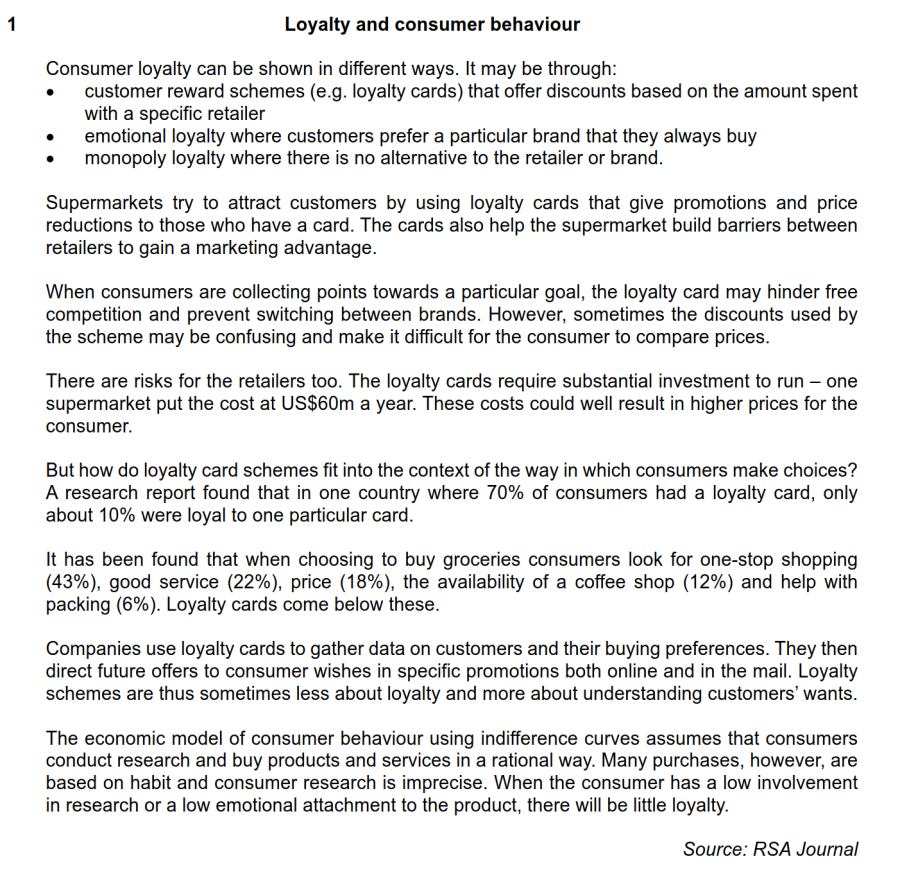
中英对照
| 原文 | 参考译文(谷歌机翻) |
|---|---|
| Loyalty and consumer behaviour Consumer loyalty can be shown in different ways. It may be through: |
忠诚度和消费者行为
|
Essay - Micro微观
Essay - Macro宏观





